Growing lavender in the garden is a pleasure
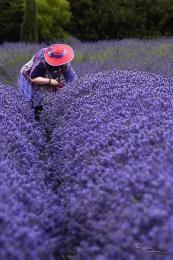
Availability lavender in a personal plot you can smell it rather than see it. Unsightly gray-green bushes with small flowers are not rivals to roses or other wildly blooming garden beauties. However, gardeners take great pleasure in growing lavender bushes in their own gardens.
Content:
- Lavender care
- Lavender varieties
- When and how to plant lavender
- Preparing the soil for planting lavender
What is so attractive about this small mountain plant, grown with such love by gardeners? Firstly, it's the aroma. And like any strong-smelling plant, lavender is a good honey plant. Secondly, the plant has a number of healing properties, the main of which is its use in aromatherapy procedures. Thirdly, the plant is very unpretentious in care and provides exceptional aesthetic pleasure, without the need for additional agrotechnical measures.
Lavender care
Under natural conditions, lavender is found in that part of the mountain ranges where traditionally there is a large amount of rainfall. The plant is moisture-loving. Consequently, growing on the light peat soil of a personal plot, it requires regular watering. Especially if the warm period of time turned out to be dry.
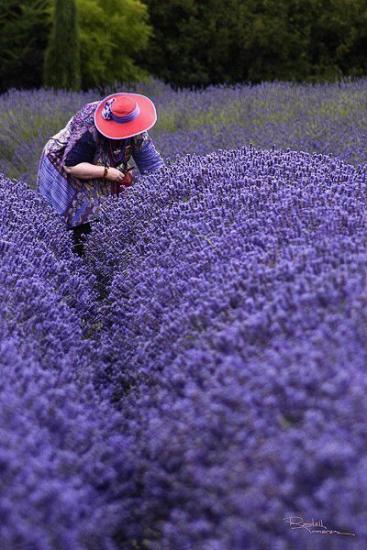
Caring for the plant is very simple. It is enough to prune the lavender bushes after the next stage of flowering, and it will again produce flowering shoots.Growing lavender in the garden is a pleasure, accompanied by vigorous flowering throughout the growing season and the magnificent aroma of blooming flowers.
Medical aromatherapy course based on the smell of lavender, it is aimed at combating stress, various types of depression, getting rid of migraines and headaches. The use of lavender flowers in medicinal baths helps eliminate the symptoms of dermatitis, stop inflammatory processes and heal wounds.
The halo of lavender is quite large. It grows especially well in warm and temperate climates. The most positive qualities noted by gardeners are their long life expectancy and long flowering periods.
Lavender varieties
There are about 30 lavender varieties. Depending on the species, the flowers have different colors: ranging from deep purple to bright white, including blue, pink, blue, and purple shades.
- Lavender angustifolia (medicinal, English), evergreen. The height of the peduncle is 80 cm. The flowering period is June, July. The flowers are small, collected in a brush. The size of the brush is about 20 cm.
- Lavender Spanish (French), early. A tall shrub about 130 cm in height with wide leaves and medium-sized flowers. The stem of the peduncle does not exceed 50 cm. The inflorescence is small, about 10 cm.
- Lavender jagged, decorative. The plant is quite thermophilic. Grows mainly in southern latitudes. The plant is low, only up to 30 cm in height. The leaves are carved, small, silvery in color. The flowers are larger and more fragrant than other types of lavender.
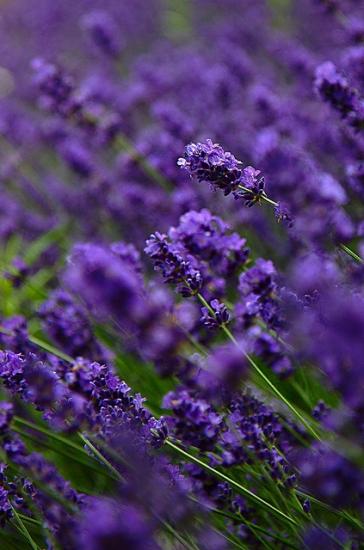
Several hybrids have been developed based on Lavender serrata. They have a stronger and more pungent odor. Hybrid forms are called lavandins.
When and how to plant lavender
In order for lavender to take root well on the site, it is advisable to select varieties from local breeders. A plant is being planted in early spring, when surface frosts have stopped. Only in the southern regions is it possible to plant lavender in the fall, no later than 60 days before the onset of frost.
- Before planting, the bush of the plant is placed in water for an hour and a half;
- planting is carried out in beds up to 40 cm high;
- before planting, the apical part is cut off for better tillering;
- excess roots and lower branches with leaves must be removed;
- the depth of the planting hole for medium-sized lavender should be about 30 cm;
- between decorative lavender bushes the distance should be at least 30 cm, and for tall lavender - up to 120 cm.
Preparing the soil for planting lavender

All types of lavender prefer dry sandy loam, less often loamy soils, with good drainage and acidity pH 6.5-7.5, that is, alkaline. It is advisable to neutralize acidic soils with ground limestone. Soil fertility level is average.
As a conclusion. Lavender is a very beautiful sight, if planted in groups from compact and dense bushes. In this case, it seems that a blue or purple river is rapidly flowing along the paths. Depending on the variety, lavender is used to form borders, rock gardens or as a hedge. In addition to its healing properties used in medicine, lavender is used in cooking. Meat intended for grilling is covered with twigs and lavender flowers. Flowers are used to prepare baked goods and sweet dishes, as well as aromatic additives in juices and drinks.

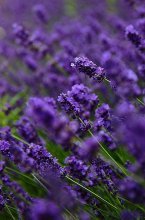
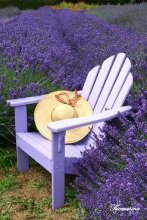
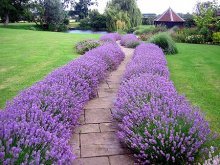
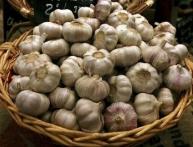
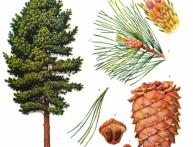
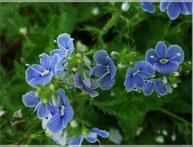


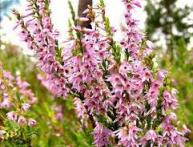
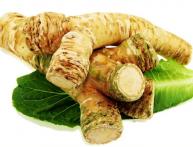
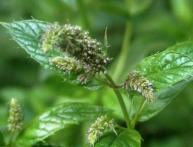
Comments
No matter how hard I tried to grow lavender, I couldn’t. Apparently, our climate is not suitable for her.
We planted two small stalks of lavender, five to seven cm high. I spent the last summer intensively caring for them. Only one accepted it and by the end of the summer it had grown a little. The stalk overwintered well and now stands with last year’s dark green leaves. What will happen next is difficult to say.
I grew it from seeds at home in the spring and planted it in the garden in May. This is the third year that five beautiful bushes have been growing. I prune it in early spring; it tolerates frost well.
How beautiful she looks! Somehow it never occurred to me to plant lavender in my dacha, but this is a great idea. You need to plant several bushes at once; lavender looks very beautiful when there is a lot of it. I really wanted to grow this plant too, it’s worth a try.
Well, what incredible beauty. I've always liked these flowers. I even tried to grow them in my garden once. It’s true that back then I thought the whole thing was too tedious, but the beauty was stunning. Maybe I should plant lavender again now?
My mother grows flowers in her dacha and the lavender she grows is wonderful and beautiful, and it smells wonderful! And it’s not difficult at all, the main thing is that the climate is suitable for it.
For the first time this year I planted lavender - already ready-made tiny bushes. They smell, they have taken root, but the varieties are different, perhaps - some are bright purple, others are almost gray. Or are the gray ones sick? Who can tell? Although all the flowers look identical, except for the color.